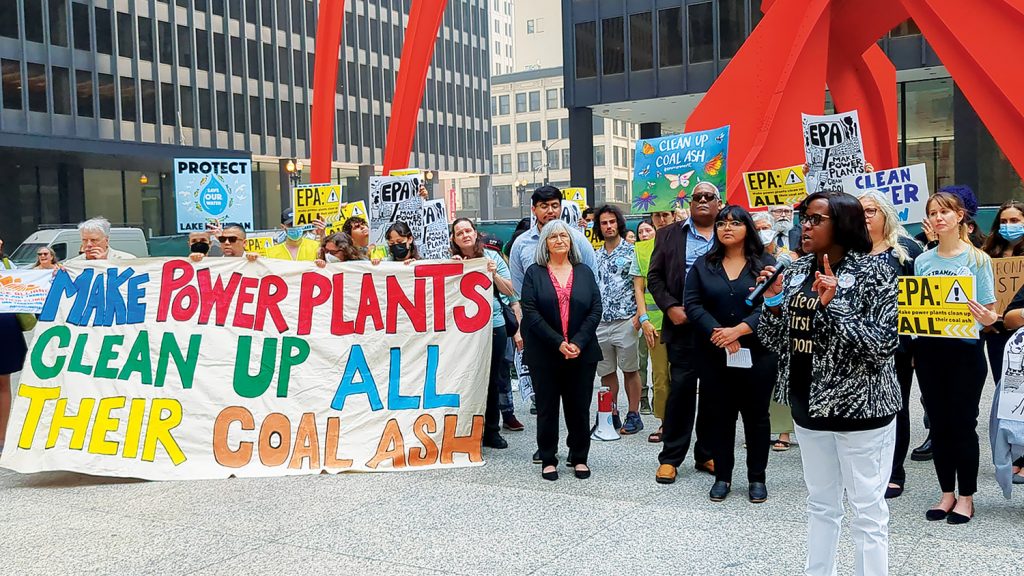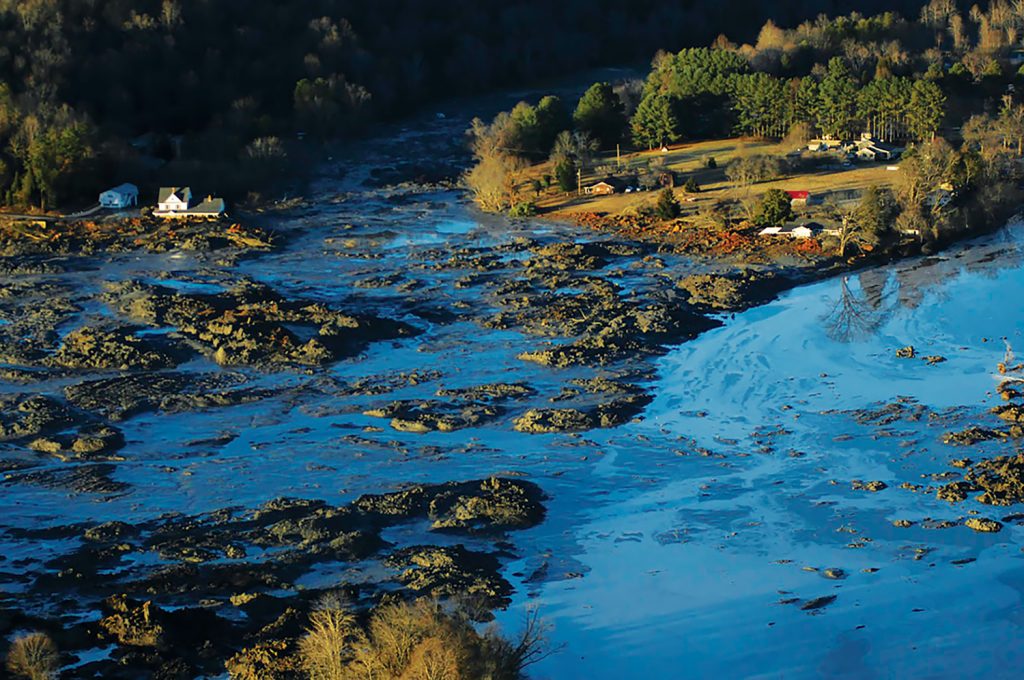
Betty Johnson speaks about protecting communities from coal ash utside of the EPA’s Chicago headquarters in June. Her Late husband Tommy Johnson cleaned up ash at the TVA Kingston coal ash spill site in 2008. Julie Bledwoe, whose husband Ron Bledsoe and late brother-in-law Doug Bledsoe were also sickened cleaning up the spill, stands to the right of the banner. Photo by Brianna Knisley
By Jen Lawhorne
The U.S. Environmental Protection Agency is revisiting its 2015 rule that regulated the disposal of toxic waste from coal-fired power plants. While the agency is proposing to strengthen its current regulations, advocates and activists are concerned that its new proposal doesn’t go far enough to protect the environment and communities from coal combustion residuals, also known as coal ash.
The EPA’s new rule sets a quicker timeline for coal ash clean up, and extends federal monitoring, closure and cleanup requirements to hundreds of previously excluded coal ash storage sites at closed power plants. The EPA will also require site owners to monitor and clean up all coal ash at a given site, rather than trying to regulate each dump at a site individually, leading to a sitewide management of the waste that will be more effective, according to the EPA. However, under the EPA’s new rule, a large number of coal ash dumps would remain unregulated by the agency.
Coal ash — a toxic mix of hazardous pollutants, metals, carcinogens and neurotoxins — is what is left behind when power companies burn coal for energy. For decades, utility companies disposed of coal ash by dumping it in unlined ponds, landfills and mines, where the pollution leaked into groundwater.

Mounds of sludge and contaminated water cover a wide area between homes in the aftermath of the Tennessee Valley Authority’s Kingston coal ash spill. Photo by Dot Griffith
The EPA held two public hearings in June and July to address its new rule and issued a 60-day comment period for community members, advocates and grassroots organizations to weigh in. Workers who cleaned up the 2008 Kingston, Tennessee, coal ash spill — the largest industrial disaster in U.S. history — traveled with their families to the EPA hearing on June 28 in Chicago to talk about how exposure to coal ash has affected their lives and harmed their health.
Betty Johnson, widow of a Kingston clean up worker, was among those who testified at the hearing. Johnson’s husband Tommy recently passed away after years of health issues that she believes were a result of his exposure to toxic chemicals during the Kingston clean up.
“We’re here for the next generation,” Johnson said at a rally outside of the Chicago hearing. “We want the EPA to do their job by stopping [coal ash]. We will never give up.”
When the EPA established its first coal ash rule, the agency declined to regulate coal ash storage sites that existed before 2015. This left half of coal ash dump sites unregulated and allowed coal plants to avoid cleaning up toxic coal ash across the country.
After years of lawsuits and grassroots pressure, the EPA is addressing gaps through the new rule, but advocates, including Appalachian Voices, the publisher of this paper, want the EPA to strengthen the criteria to include all coal ash dump sites and want the agency to strictly enforce its regulations.
Related Articles
Latest News

Leave a comment
Your email address will not be published. Required fields are marked *





Leave a Comment